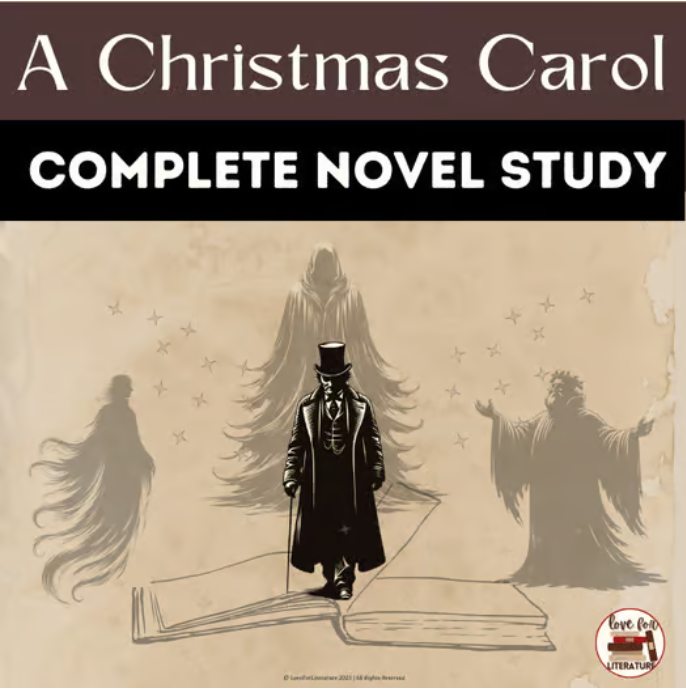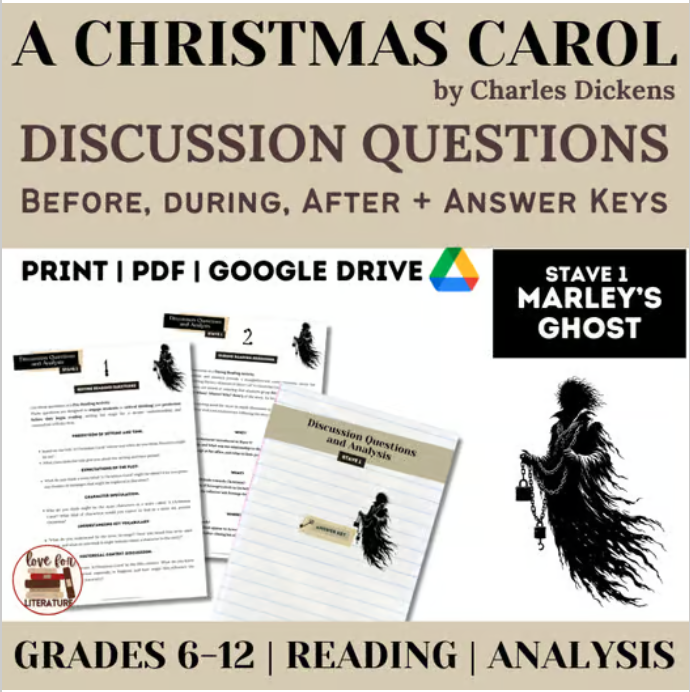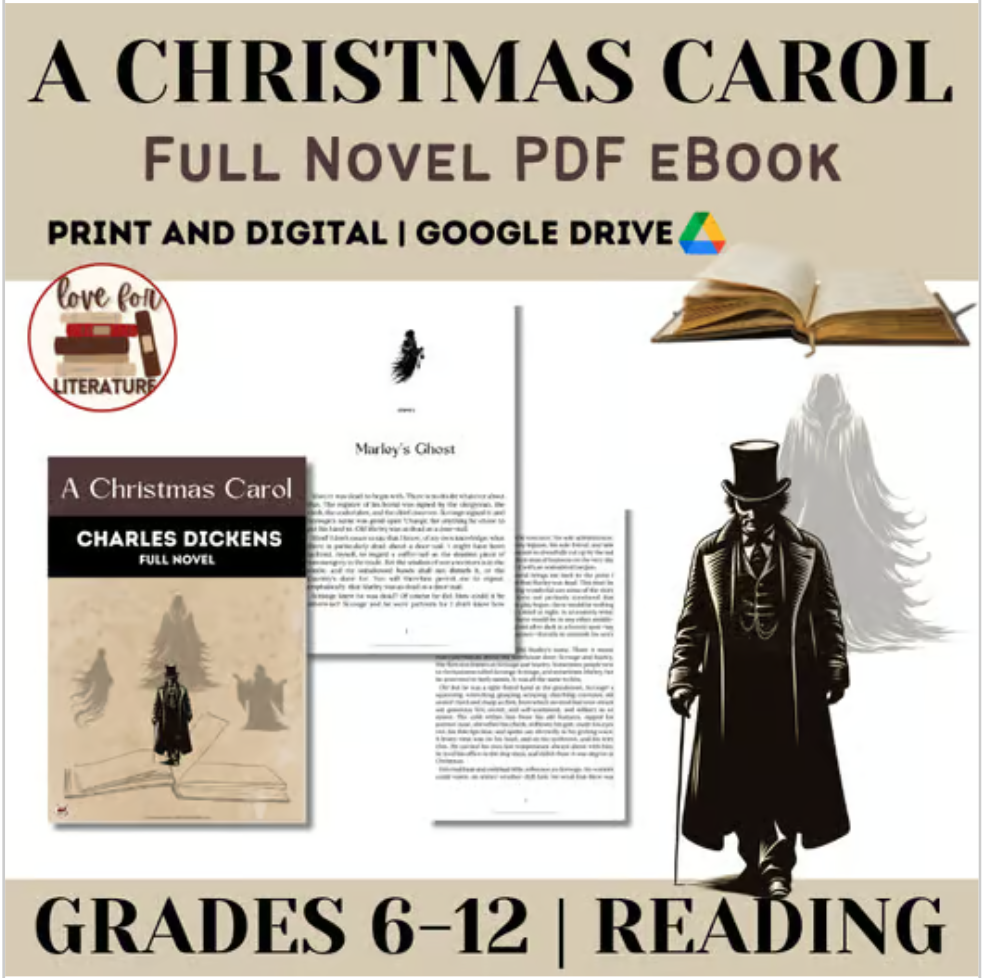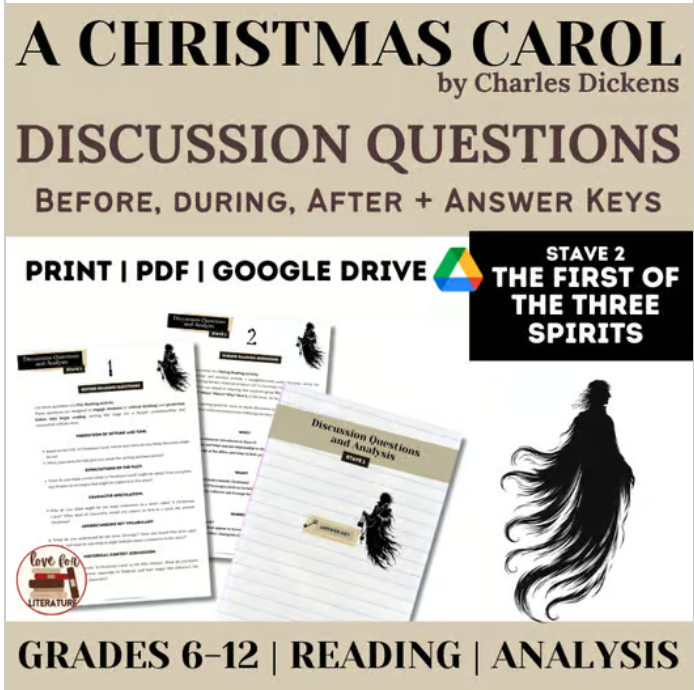Charles Dickens’ A Christmas Carol has captivated readers for generations with its heartwarming portrayal of Ebenezer Scrooge’s dramatic transformation from a miserly recluse to a generous and joyful man. In Stave 2 and 3 of A Christmas Carol, Dickens achieves something remarkable: he makes Scrooge’s transformation feel utterly believable and deeply moving. We don’t question the changes we see in Scrooge, and instead, we find ourselves smiling, even tearing up, as he changes rapidly in the space of under fifty pages.
How does Dickens make his transformation so credible and realistic?
I think the answer to this question lies in how Dickens presents Scrooge’s journey: what he goes through is a very human, relatable and moving process.
I see three interesting things happening in Scrooge’s development. He is never openly condemned, he is made aware of his own vulnerability and he experiences connection and a sense of affection for the first time, even if in the form of a vision.
1. He is Never Condemned
First of all, Scrooge is never told how to interpret the visions, but he is only forced to observe his life from the outside.
“Good Heaven!” said Scrooge, clasping his hands together, as he looked about him. “I was bred in this place. I was a boy here!” […]
“Your lip is trembling,” said the Ghost. “And what is that upon your cheek?”
“Remember it!” cried Scrooge with fervour; “I could walk it blindfold.” […]
“The school is not quite deserted,” said the Ghost. “A solitary child, neglected by his friends, is left there still.”
Scrooge said he knew it. […]
A lonely boy was reading near a feeble fire; and Scrooge sat down upon a form, and wept to see his poor forgotten self as he used to be.
The Ghosts act as a guide, unveiling truths and never lecture or condemn. This idea of “revealing” can be sourced etymologically to the concept of “unveiling” – a literal peeling back of the layers that kept him in a state of blindness. He is compelled only to witness key moments from his past, present, and future, but never forced into any specific conclusions. Scrooge’s journey can more likened to a process of “revealing” or revelation, rather than a lecture or condemning.
2. He is Made Aware of His Own Vulnerability
Scrooge’s journey is marked by deeply personal encounters that awaken his connection to his own humanity and vulnerability. At the Cratchit household, the Ghost closes in on the family celebrating Christmas with dignity and enthusiasm.
During the meal, Bob Cratchit proposes a toast to Scrooge as “the founder of the feast,” since Scrooge’s employment allows Bob to provide for his family.
Scrooge was the Ogre of the family. The mention of his name cast a dark shadow on the party, which was not dispelled for full five minutes.
Scrooge’s vulnerability is completely laid bare: the kind-hearted Cratchits struggle to think of him positively and the contrast between Bob’s good-natured toast and the awkward embarrassment that follows at the mention of his name make us quietly despair.
Despite his wealth and power, the most understanding and forgiving people cannot find anything to say in his defense.
3. He Experiences Connection
In one of the most humorous and poignant parts of the book, at the end of Stave 3, Scrooge witnesses Fred’s Christmas Party, where the guests are playing a game of Yes and No. Fred, with his characteristic warmth and good humor, leads the game by thinking of something the others must guess. The “something” turns out to be a “savage animal”—a creature that growls and grunts, lives in London, and isn’t kept in a zoo or menagerie. The party eventually realizes the answer: it’s Scrooge himself.
He has given us plenty of merriment, I am sure, and it would be ungrateful not to drink his health. Here is a glass of mulled wine ready to our hand at the moment; […] A Merry Christmas and a Happy New Year to the old man, whatever he is!
Fred’s enduring affection prevails even in his absence and remembers him at the party by making him the punchline of his joke.
But the most beautiful thing that happens in this scenario is how Scrooge is so engrossed in the game: far from being offended, he completely forgets that he is invisibile and acts as if the guests can hear him!
Scrooge, wholly forgetting […] that his voice made no sound in their ears, sometimes came out with his guess quite loud, and very often guessed quite right, too.
Scrooge’s change of heart and transformation is enough for him to be granted a chance to start again and embrace the life he had always had, but never knew he wanted.
Are You Teaching "A Christmas Carol" this Year?
Reading A Christmas Carol is a beautiful and poignant story that encompasses themes that are timeless and important for all ages.
If you want to bring the richness of A Christmas Carol into your classroom, check out my full bundle for an in-depth reading of Dicken’s work. The bundle will give you about 1-1.5 months worth of curriculum time, is Common Core aligned and can be used with Grades 6-12.
What does it contain?
- Scrooge character analysis graphic organizers
- A full reading guide with an answer key
- Discussion questions, analysis and much more!
Have any thoughts or questions? Leave a comment below!








 Previous Post
Previous Post
[…] From Isolation to Connection: Dickens’ ‘A Christmas Carol’ Complete Novel Study […]